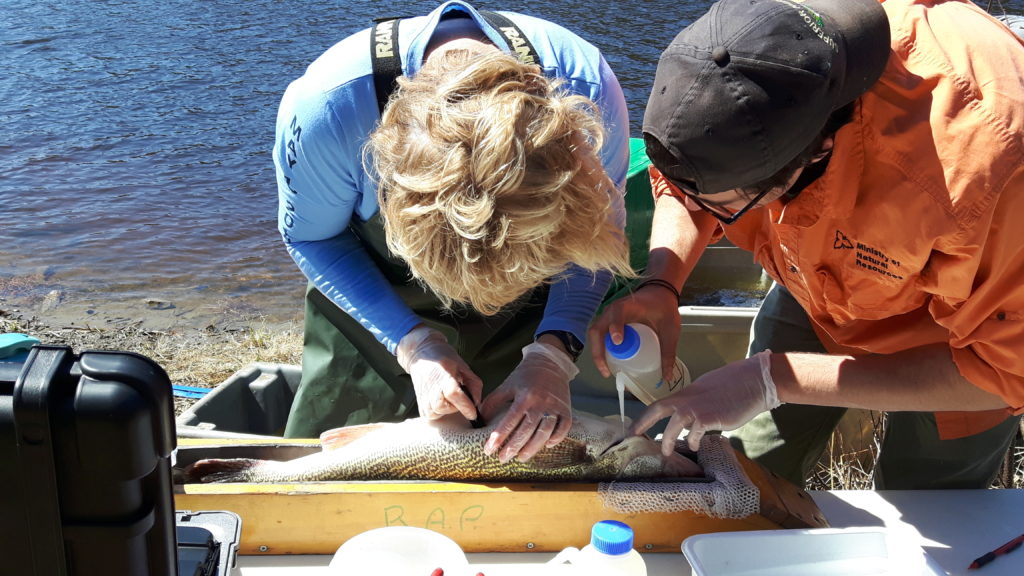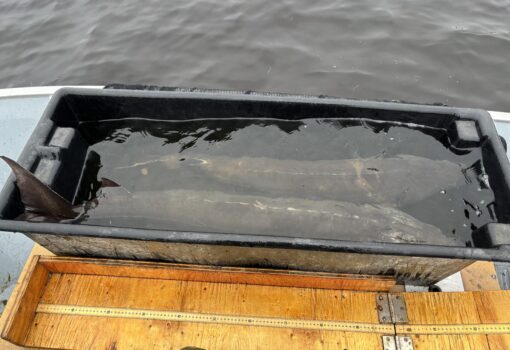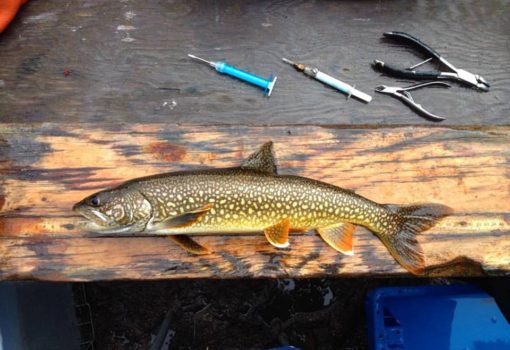
Fish movement ecology and habitat use
Movement ecology
It is becoming apparent that activity, movement and habitat use are a major component of fish life histories, but are rarely accounted for when considering life history relationships and tradeoffs generally.
The walleye population in Black Bay, Lake Superior, crashed in the mid-1960’s and has only shown signs of recovery within the past decade. To evaluate current restoration efforts and their impact on Walleye in Black Bay, we are examining the movement ecology of Walleye along the north shore of Lake Superior. This work is in collaboration with the Ontario Ministry of Natural Resources and Forestry and Fisheries and Oceans Canada. Graydon McKee is evaluating relationships between fish movement and life history strategies in Walleye. Natalya Assance continues this work by evaluating long-range movement patterns of Walleye across the North Shore of Lake Superior.
Another aspect of changes in Black Bay relates to Steelhead. As Walleye have begun to recover in Black Bay, Steelhead have declined. Kyle Stratton evaluated changes in life history traits of Steelhead from Portage Creek in Black Bay, Lake Superior, and compared those life histories and population changes with other populations across the north shore.
Our Walleye movement ecology work then moved into Lake Winnipeg, where Nicole Turner will be leading a collaboration between our group, DFO and the University of Manitoba to investigate changes in the movement patterns in Lake Winnipeg using both unpublished tagging data from the province and more recent telemetry data being collected by DFO.
Lake Sturgeon are a threatened but important species in many Canadian rivers. Post-doctoral researcher Liset Cruz-Font investigated movement of Sturgeon in the Ontario far north and developing agent-based models to understand the potential impact of development on the behaviour and life history traits of this iconic species.
With Justin Hubbard, we determined if survival rates are different between fish that have received surgeries for acoustic tag implants compared with those handled on a regular basis at the IISD-Experimental Lakes Area, using long-term data from tagging experiments since 2002.
New work by Monica Geisbrecht is underway to understand how Mysis re-establishment is altering Lake Trout behaviour.



